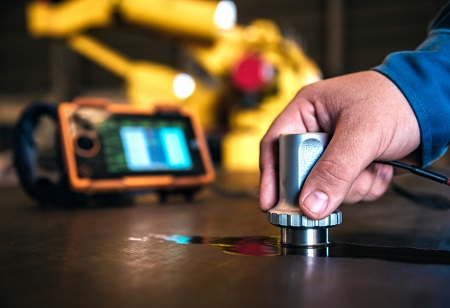Non-destructive testing has emerged as an established procedure to evaluate the properties of a material or system without causing damage. With its growing popularity and becoming of a norm, the global non-destructive testing market is expected to witness a CAGR of more than 6 percent in the coming years. Experts cite the spurt in manufacturing activities amongst the developing and the developed nations as the factor driving the non-destructive testing (NDT) market. It has been the result of technological innovations that have contributed to the development of advanced non-destructive testing processes.
Strengthening it further is the increasing awareness amongst the manufacturers regarding the use of non-destructive testing which is expected to improve the penetration of NDT techniques in the near future. Increasing automation in the industrial manufacturing and infrastructure sectors has raised the demand for flaw detection related to several imperfections and manufacturing disorders. And therefore, adherence to industrial safety norms has become a significant factor behind the growth of the NDT market.
“Stringent government regulations regarding public safety and product quality, and continuous advances in electronics, automation, and robotics are a few key factors driving the growth of the NDT Market and inspection market. The high adoption of IoT devices and rising need to assess the health of aging assets are also propelling the growth of the NDT Market and inspection market,” says a report by MarketsandMarkets.
Simulation and Sensing Technology
With the advent of simulation in manufacturing, several manufacturing processes are now being optimized and non-destructive testing has also benefitted from it. Through the simulation of non-destructive testing techniques and methodologies, manufacturers are now able to reduce testing cycles and the total time taken in testing. Getting a feel of the whole process beforehand and executing testing in an effective and fool-proof way is how the testers have evolved with the power of simulation. The testing methodologies are also getting transformed by sensing technologies, which much like their usefulness in predictive maintenance are proving their efficacy in non-destructive testing. Sensors are capable of giving critical data about the functioning of the product or equipment and the manufacturers can use the insights to correct the product features before rolling it out.
If we look at the APAC region, it is certainly going to offer opportunities for the non-destructive testing market owing to the increase in infrastructure spending by the governments. This growth is being attributed to the rising urbanization in developing nations such as India and China which involves undertaking extensive construction and manufacturing projects. The speed of such projects makes it mandatory for the executors to implement testing processes in order to ensure quality in work. This trend is expected to positively impact the growth of non-destructive testing in these nations improving the market’s penetration further.
Utilizing these novel technologies, non-destructive testing is going to transform for the better and it is bound to ensure that manufacturing reaches the next level in efficiency, safety, and quality.
